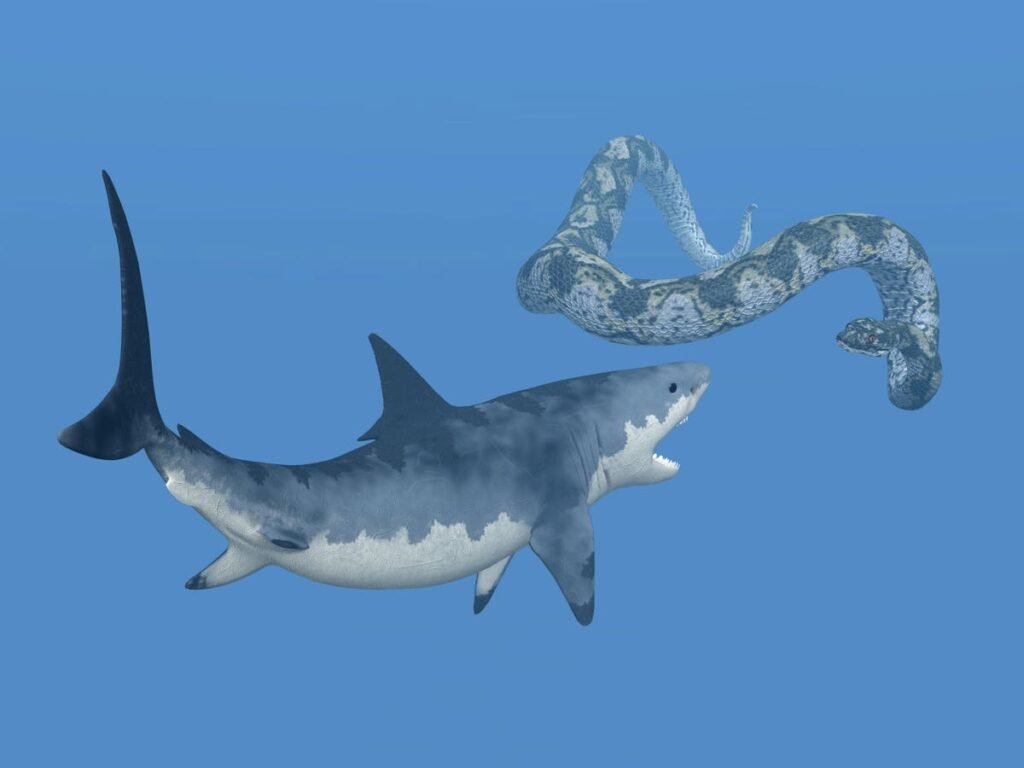Most boas, which are a type of large, non-venomous constricting snake, prefer a diet of mammals, … More
If you’ve ever seen a green anaconda coiled in the waters of the Amazon or watched a reticulated python stretch itself along a forest floor in Southeast Asia, you’ve already met two of the world’s largest living serpents. These giants, both capable of reaching over 20 feet in length, are apex predators in their ecosystems. But a long-extinct relative puts them to shame with ease.
In 2009, within the Cerrejón coal mine in northern Colombia, scientists unearthed the fossilized remains of an ancient snake so mindbogglingly massive, its discovery seemed almost mythical. Dubbed Titanoboa cerrejonensis, this prehistoric boa lived about 58 to 60 million years ago, not long after the dinosaurs vanished. Estimated at nearly 42 feet long at the time and weighing well over a ton, it remains the largest snake ever discovered (although another prehistoric snake from ancient India might be a close contender). And while its size was enough to make headlines, what truly surprised scientists was how it likely lived, and what it ate.
Titanoboa Was An Early Boa — And Its Monstrous Size Had To Do With Heat
Boas are a family of large, muscle-powered snakes. Unlike venomous species that inject toxins, boas kill by constriction, which means they coil around their prey and squeeze the last breath out of the animal. It’s slow, silent and brutally effective.
They belong to the snake family Boidae, which includes the green anaconda, the world’s heaviest (and second longest) living snake and the boa constrictor, whose name has become shorthand for the entire group. Most boids live in tropical environments, especially in South America and Southeast Asia, where hot, humid conditions allow these cold-blooded animals to reach massive sizes. That’s because their body temperature and metabolism depend entirely on the warmth of their surroundings.
To survive at its estimated size, Titanoboa would’ve needed a consistently hot environment with average yearly temperatures between 86–93°F. That estimate matches climate models suggesting the Paleocene tropics were much hotter than they are today, likely due to elevated levels of atmospheric CO₂ during that era.
The Cerrejón Formation, where Titanoboa was found, is now considered the oldest known fossil site of a neotropical rainforest. Alongside the snake’s remains were fossils of massive turtles, crocodile-like reptiles and large fish, painting a vivid picture of a dense, humid ecosystem teeming with life. Based on the environment and the other animals present, researchers believe Titanoboa lived much like a modern anaconda, spending much of its semiaquatic life in the water. And yet, in one key way, it seems to have broken the mold.
In The Early 2010s, We Found A Missing Piece Of The Titanoboa Puzzle That Proved The More We Know, The Less We Know
When Titanoboa was first discovered, all scientists had were massive vertebrae. This was enough to estimate its length, but not much else. Without a skull, there was no way to know how this prehistoric snake actually fed or how it related to modern boas and anacondas. That changed in the early 2010s, when field teams returned to Colombia’s Cerrejón mine and uncovered fragments of Titanoboa’s skull, including bones from the upper and lower jaw, palate and braincase. For the first time, scientists could piece together its head and, with it, a clearer sense of its lifestyle.
The reconstructed skull measured about 16 inches long, implying a total body length of around 47 feet, even longer than earlier estimates. But more telling than the size were the feeding adaptations. Titanoboa’s teeth were only weakly fused to its jaw. This, interestingly, is a trait found in modern snakes that specialize in eating fish. But no known boa alive today actively specializes in hunting fish.
Its skull also showed reduced articulations between key bones and a shallow quadrate angle, both of which are associated with piscivory. Combine that with its swampy habitat and the presence of giant prehistoric fish nearby, and a new picture emerged: Titanoboa may have been the only boid of its kind: a supersized, fish-hunting serpent unlike anything else we’ve ever seen.
A 1,700-pound, life-size model of the prehistoric snake is at the Smithsonian National Museum of … More
The largest snake to ever exist may not have lived if it didn’t adapt to feed on aquatic life. If this story sparked something in you, take the science-backed Connectedness to Nature Scale and explore your own relationship with the planet.







